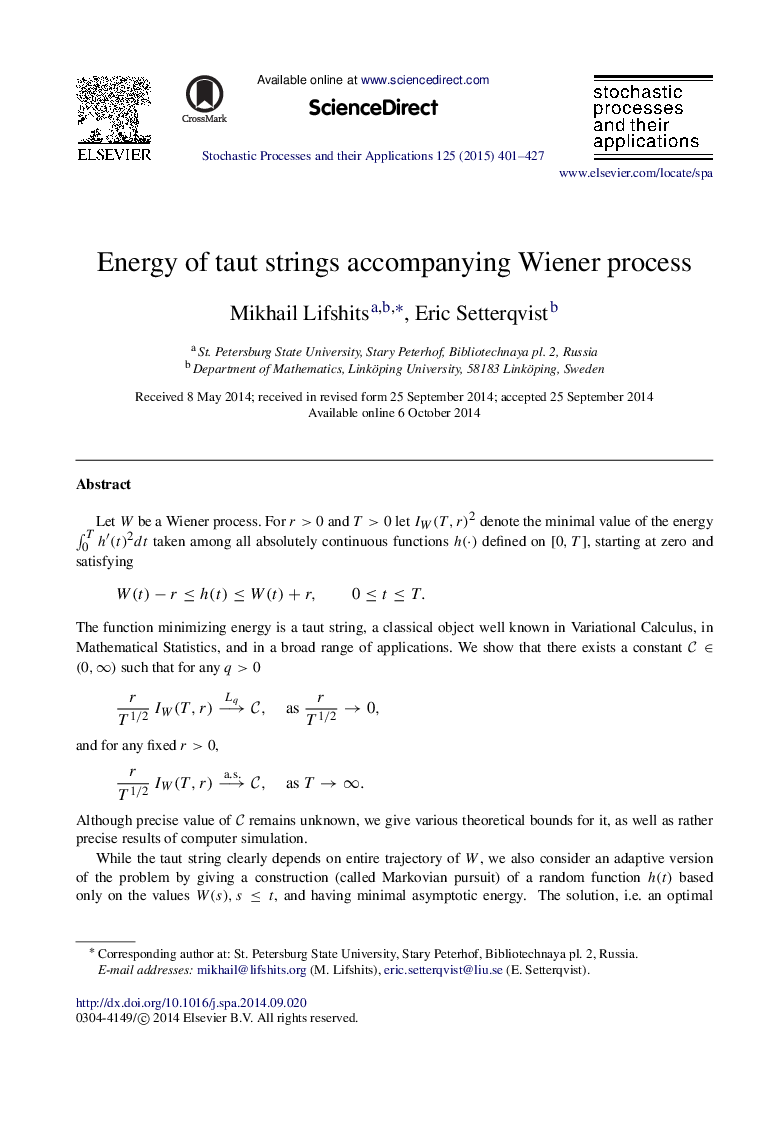| Article ID | Journal | Published Year | Pages | File Type |
|---|---|---|---|---|
| 1155545 | Stochastic Processes and their Applications | 2015 | 27 Pages |
Let WW be a Wiener process. For r>0r>0 and T>0T>0 let IW(T,r)2IW(T,r)2 denote the minimal value of the energy ∫0Th′(t)2dt taken among all absolutely continuous functions h(⋅)h(⋅) defined on [0,T][0,T], starting at zero and satisfying W(t)−r≤h(t)≤W(t)+r,0≤t≤T. The function minimizing energy is a taut string, a classical object well known in Variational Calculus, in Mathematical Statistics, and in a broad range of applications. We show that there exists a constant C∈(0,∞)C∈(0,∞) such that for any q>0q>0rT1/2IW(T,r)⟶LqC,as rT1/2→0, and for any fixed r>0r>0, rT1/2IW(T,r)⟶a.s.C,as T→∞. Although precise value of CC remains unknown, we give various theoretical bounds for it, as well as rather precise results of computer simulation.While the taut string clearly depends on entire trajectory of WW, we also consider an adaptive version of the problem by giving a construction (called Markovian pursuit) of a random function h(t)h(t) based only on the values W(s),s≤tW(s),s≤t, and having minimal asymptotic energy. The solution, i.e. an optimal pursuit strategy, turns out to be related with a classical minimization problem for Fisher information on the bounded interval.
